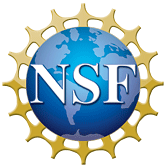Impact of a Smaller ARISE Antenna
Next: Brightness-Temperature Threshold Up: Detectable Sources for ARISE Previous: More Sensitive Ground Telescopes
Impact of a Smaller ARISE Antenna
There occasionally has been discussion of building a space
telescope for ARISE that has a solid central surface that
operates at 86 GHz, with the outer sections working only at lower
frequencies. If such an antenna were built, and a 3-meter central
portion had an aperture efficiency of 0.5, its SEFD at 86 GHz
would be ![]() Jy, a factor of 11
worse than the nominal value. The number of detectable sources is
given in Table 5. This table shows that such a small antenna
would be inadequate at any feasible data rate for a baseline to a
VLBA antenna, but might be able to observe a satisfactory number
of sources if large amounts of time on the GBT were available. Of
course, imaging would be very difficult with such a large
disparity between the sensitivities of the space telescope and
the ground telescopes, so the actual situation is probably worse
than that depicted in Table 5.
Jy, a factor of 11
worse than the nominal value. The number of detectable sources is
given in Table 5. This table shows that such a small antenna
would be inadequate at any feasible data rate for a baseline to a
VLBA antenna, but might be able to observe a satisfactory number
of sources if large amounts of time on the GBT were available. Of
course, imaging would be very difficult with such a large
disparity between the sensitivities of the space telescope and
the ground telescopes, so the actual situation is probably worse
than that depicted in Table 5.
| Table 5. Sources for 3-meter ARISE Telescope | ||||
|
Assumed |
||||
| Data Rate | VLBA Antenna | GBT | ||
| (Gbit
sec |
Threshold | Number | Threshold | Number |
| 8 | 400 mJy | 37 | 87 mJy | |
| 4 | 570 mJy | 26 | 124 mJy | 210 |
| 2 | 800 mJy | 16 | 175 mJy | 140 |
| 1 | 1130 mJy | 8 | 247 mJy | 83 |
Next: Brightness-Temperature Threshold Up: Detectable Sources for ARISE Previous: More Sensitive Ground Telescopes




Connect with NRAO